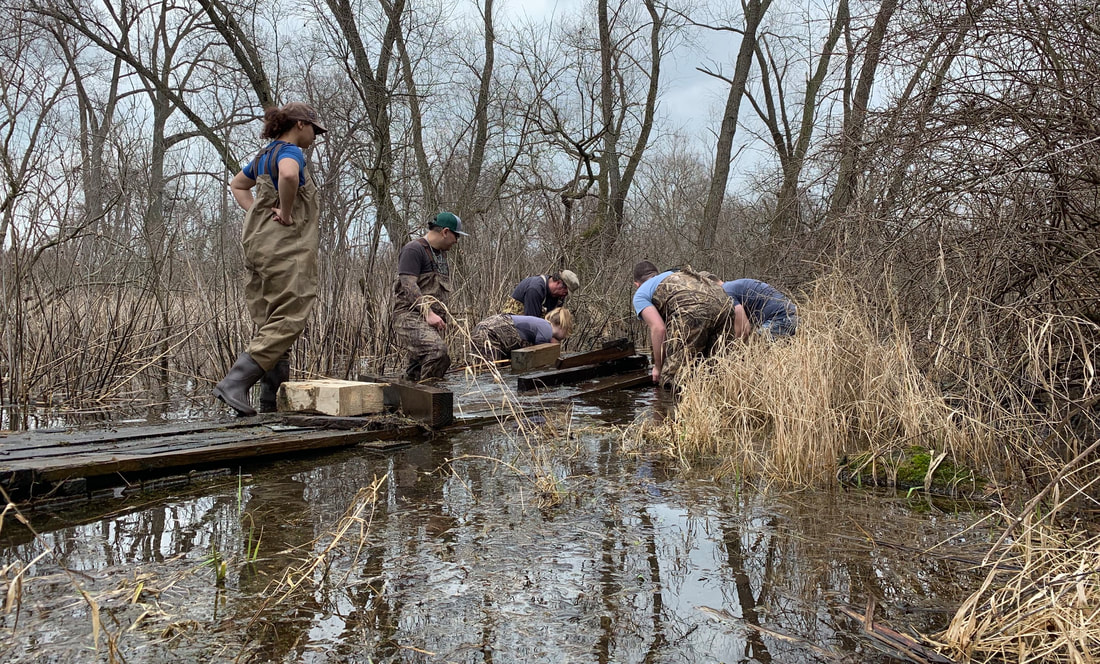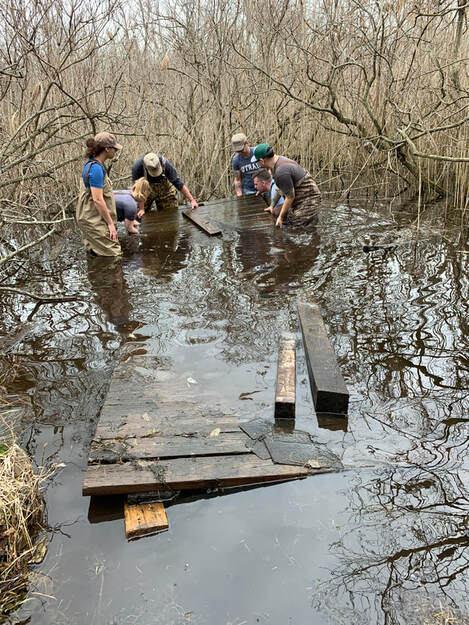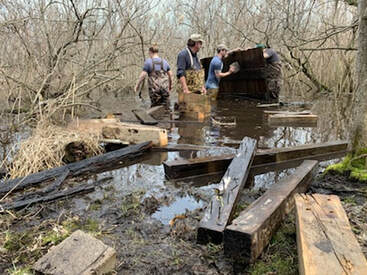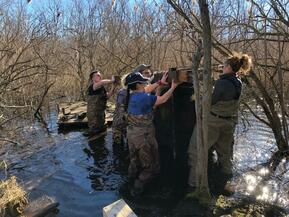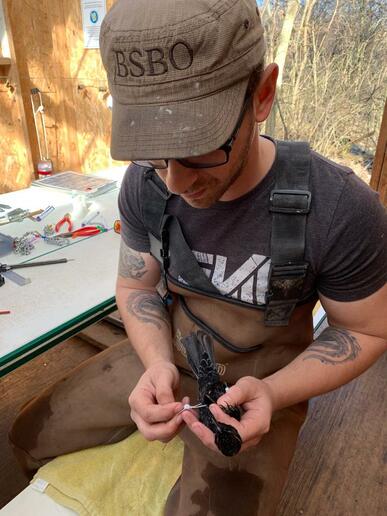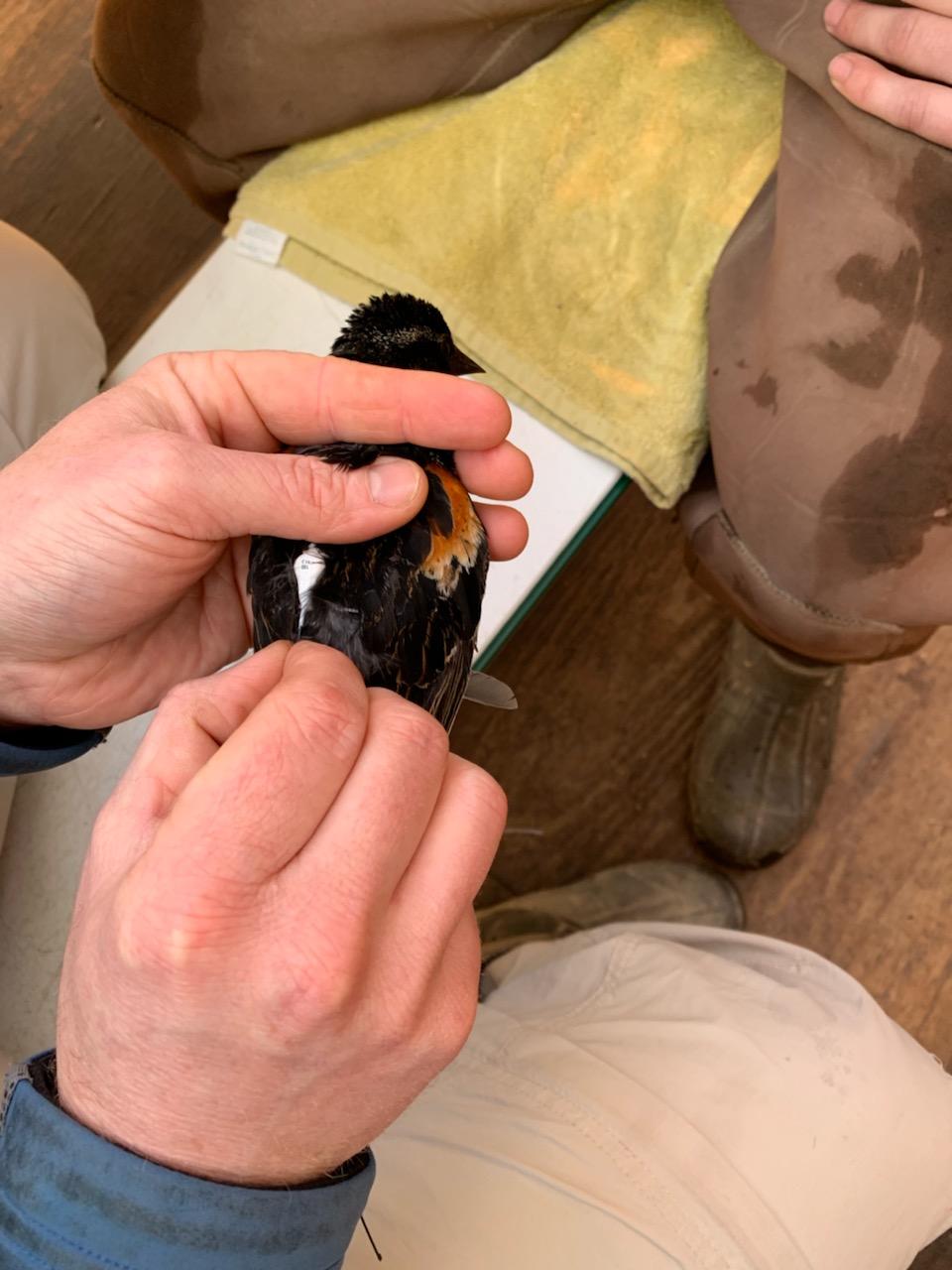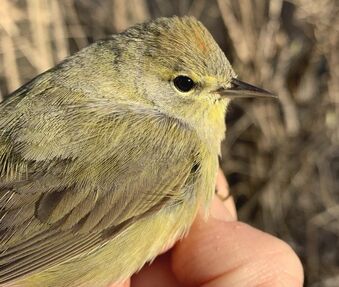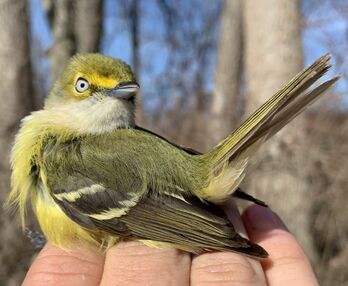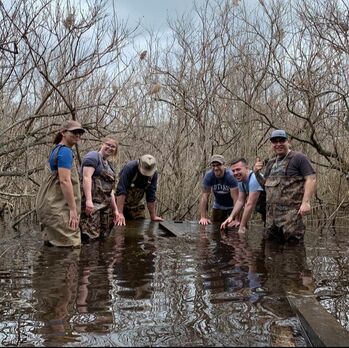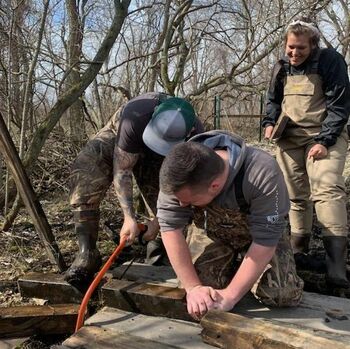Enjoying our blogs?Your support helps BSBO continue to develop and deliver educational content throughout the year.
|
|
As long as winter may have felt, the icy winds and snow have quickly faded, and the BSBO research team is back out in the Navarre Marsh, ready to begin operations for the 2019 spring migration season. Well… we were almost ready. With heavy precipitation and strong northerly winds throughout the winter months, the section of marsh the banding station is situated in has been completely inundated by water. We experienced this a bit last year (which aided in catching some of our first-ever Belted Kingfishers), but this year is a whole different level of “flooded.” To best capture birds and sample the movement of different species through the marsh, many of our nets run over boardwalks to get into aquatic habitats such as buttonbush swale. However, the marsh has decided to take these boardwalks for her own and many of them succumbed to the murky waters. For the safety of the birds, volunteers, and staff that work in the station, banding operations could not start until these boardwalks were raised. Thus, a week that could have been spent banding birds and collecting early migration data, was spent waist-deep in the frigid marsh waters, shoving blocks of wood under water-logged boardwalks. Oh what fun! Normally, the research team heads into the marsh a week before our (amazing) volunteers begin coming out. Generally we take this time to get things set up, work out any kinks, and get ourselves back in the groove of banding birds. Not so much this year. Instead we spent four and half days elevating platforms (in some instances, literally elevating the whole thing out of the water), rebuilding some boardwalks, and constructing extensions to span formerly dry areas. As grueling as it was, we had a pretty fun few days getting to know the marsh bottom and the boardwalks a little better; days filled with laughs, sore muscles, leaky waders, and some good ol’ fashion marsh ingenuity. While we weren’t able to operate during this construction time, we did have any opportunity to receive some new training. In collaboration with Powdermill Avian Research Center and others, BSBO will be affixing radio transmitters to certain species this year as part of a project spanning the Lake Erie shoreline. So while we didn’t get to fully operate the station last week, our research team did learn proper techniques for fitting radio harnesses to birds including sizing, actually fitting a harness to a bird, proper tightness, and positioning. Stay tuned for more on this topic as the season develops! 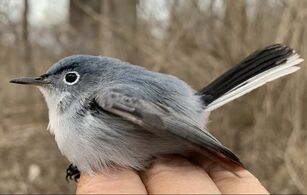 Blue-gray Gnatcatcher Blue-gray Gnatcatcher Finally, after some long, cold days, loads of lumber, and a couple boxes of screws… we were ready to begin banding on Friday the 12th (with the confidence that our feet and nets would stay dry). From being in the marsh earlier in the week, we could already tell from mere observations that there was definitely some good migrant movement occurring in the region. Even though we were a little late to start sampling birds, on Friday and Saturday we were able to catch some remaining Fox Sparrow, American Tree Sparrow, Slate-colored Junco, and Red-breasted Nuthatch. With most of these “winter” birds leaving, others have rapidly been replacing them and the marsh has been filled with the sounds of Ruby-crowned Kinglet, Brown Creeper, Blue-gray Gnatcatcher, White-throated Sparrow, and Myrtle Warbler. And while not totally unexpected at this time, with shifting winds going into Saturday, we were happily surprised to encounter an Orange-crowned Warbler, White-eyed Vireo, and House Wren. Similarly to last year (but more so this season), it will be interesting to see how water levels in the marsh will affect bird movement and our ability to catch them in this incredible, ever-changing habitat. One thing’s for sure though… we’re ready to have a great season filled with birds, friends, and new opportunities to learn more about the wildlife we study, and how we can continue to apply our research to conservation. Thank you to all those that make this important research possible by volunteering your time, supporting BSBO and its efforts, and promoting science and conservation.
0 Comments
Your comment will be posted after it is approved.
Leave a Reply. |
AuthorsRyan Jacob, Ashli Gorbet, Mark Shieldcastle ABOUT THE
|
